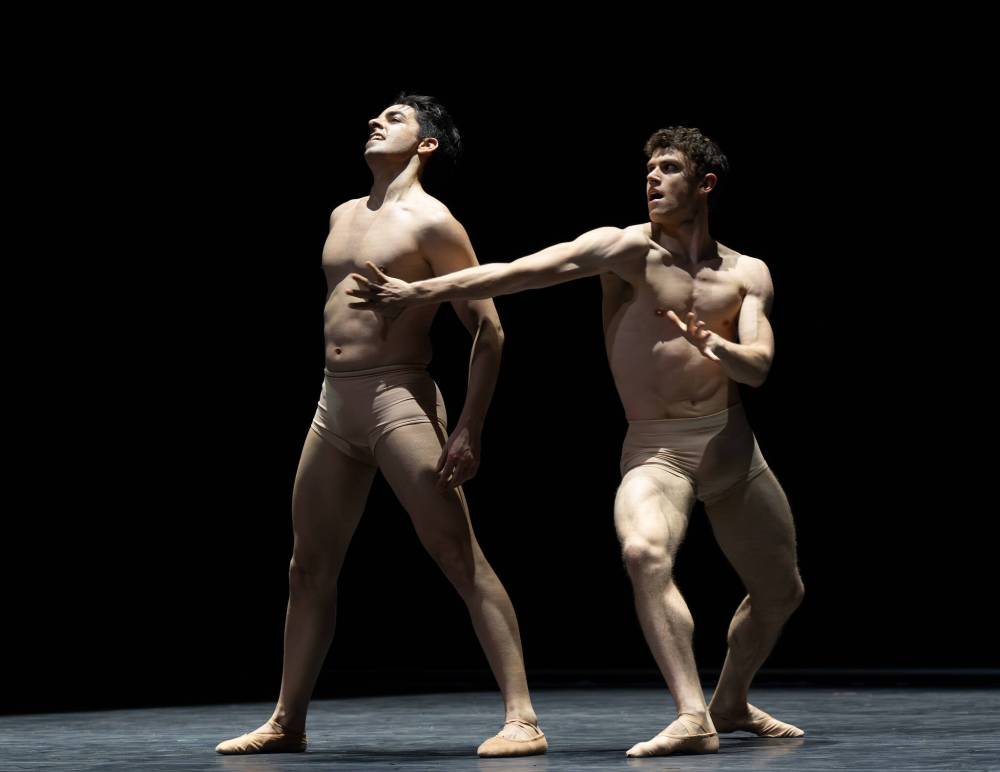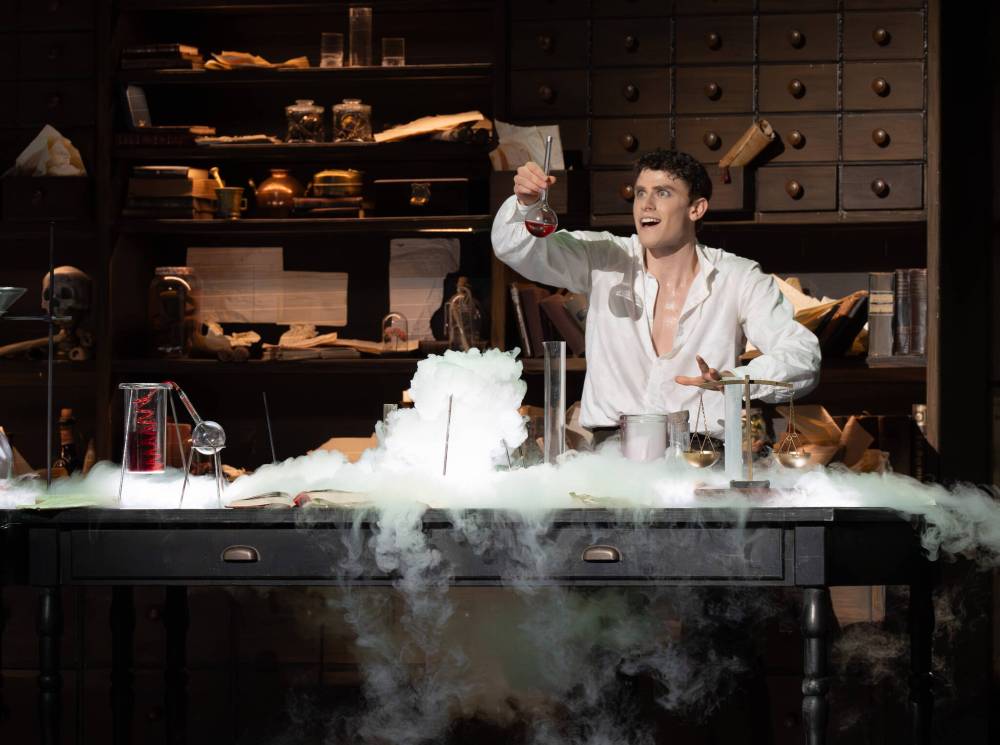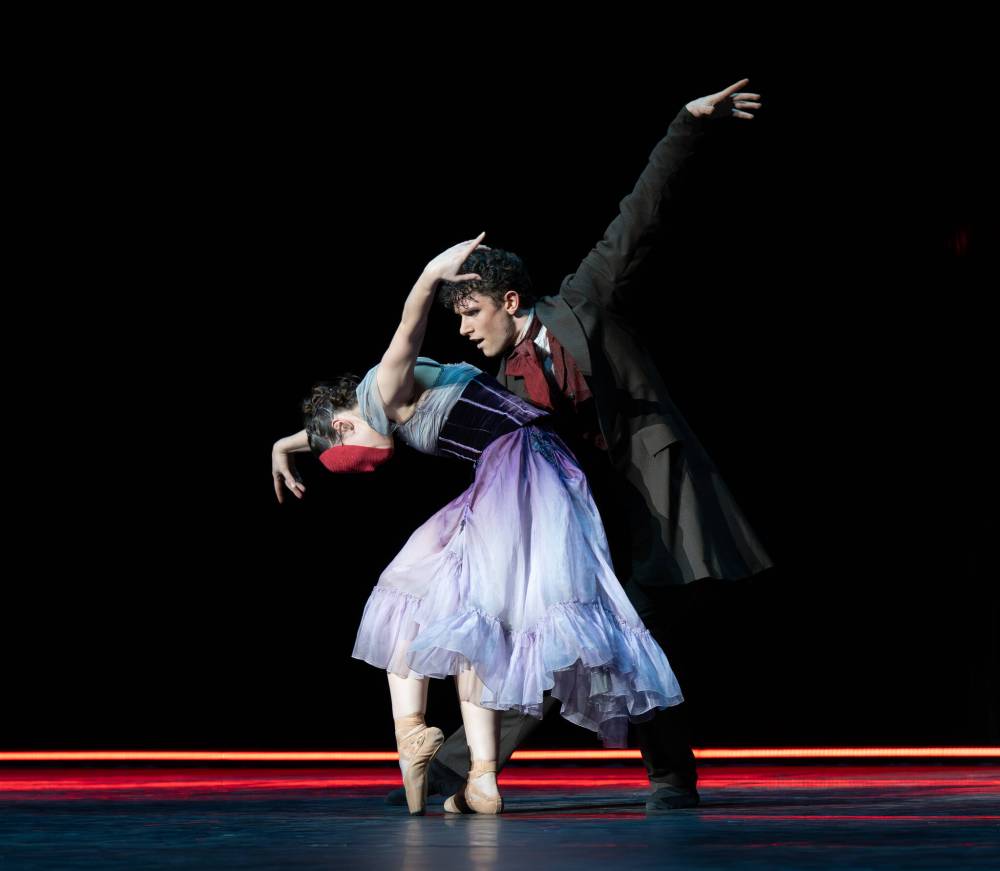Dual triumph
Jekyll & Hyde a delightfully dark, visceral ballet
Advertisement
Read this article for free:
or
Already have an account? Log in here »
To continue reading, please subscribe:
Monthly Digital Subscription
$0 for the first 4 weeks*
- Enjoy unlimited reading on winnipegfreepress.com
- Read the E-Edition, our digital replica newspaper
- Access News Break, our award-winning app
- Play interactive puzzles
*No charge for 4 weeks then price increases to the regular rate of $19.00 plus GST every four weeks. Offer available to new and qualified returning subscribers only. Cancel any time.
Monthly Digital Subscription
$4.75/week*
- Enjoy unlimited reading on winnipegfreepress.com
- Read the E-Edition, our digital replica newspaper
- Access News Break, our award-winning app
- Play interactive puzzles
*Billed as $19 plus GST every four weeks. Cancel any time.
To continue reading, please subscribe:
Add Free Press access to your Brandon Sun subscription for only an additional
$1 for the first 4 weeks*
*Your next subscription payment will increase by $1.00 and you will be charged $16.99 plus GST for four weeks. After four weeks, your payment will increase to $23.99 plus GST every four weeks.
Read unlimited articles for free today:
or
Already have an account? Log in here »
Hey there, time traveller!
This article was published 07/03/2025 (260 days ago), so information in it may no longer be current.
Royal Winnipeg Ballet’s Jekyll & Hyde takes dance lovers on a one-way joyride into depravity, with a ferocious intensity seldom witnessed on the Centennial Concert Hall stage.
The 135-minute (with intermission) story ballet — which sounds impossibly benign — is based on Robert Louis Stevenson’s Gothic psychological thriller Strange Case of Dr. Jekyll and Mr. Hyde, featuring choreography by the internationally renowned Val Caniparoli.
The fact that this is the same choreographer who gave us the Rodgers and Hammerstein-inspired A Cinderella Story, last staged here in May 2022, suggests Caniparoli boasts his own “divided self” in bringing us such a diametrically opposite work, seen here in its Canadian première.

MARK RASH PHOTO
Logan Savard (left) as Dr. Henry Jekyll and Stephan Azulay as Mr. Edward Hyde in the ballet’s mesmerizing final pas de deux.
It’s safe to say Jekyll & Hyde won’t be everyone’s cup of tea, but that’s not necessarily a bad thing. The 85-year old company is to be commended for taking such a bold programming risk.
Structured as a series of 18 scenes (including prologue/epilogue), the ballet travels from Stevenson’s bedside to an insane asylum, Jekyll’s laboratory, a ballroom, a brothel/tavern and a London street complete with billowing fog, punctuated by several surrealistic, hallucinatory sequences further underscoring the writer’s unravelling mind.
Caniparoli takes poetic licence with Stevenson’s novella, framing the narrative as an opium-addled fever dream of the dying author (second soloist Joshua Hidson), in which he conjures physician Dr. Jekyll (corps de ballet member Logan Savard) and his diabolical alter ego, Mr. Hyde (principal dancer Stephan Azulay).
Caniparoli’s engaging choreographic palette ranges from a lexicon of grounded, vernacular movement vocabulary that would be right at home in a contemporary dance studio to the pristine, fluid lines of classical ballet.
Symbiotic, unison movement is effectively harnessed at key points throughout, heightening the sense that these prototypical characters are ultimately trapped within their creator’s mind (or possibly our own), as well as the dramatically rich duality of Jekyll/Hyde born of the same flesh.
The dancers dare to let their hair down (literally) and contort their lithe bodies into grotesque shapes during one of the most harrowing scenes: Act I’s insane asylum, which figures so prominently in Victorian literature.
Wearing soft ballet slippers and white shapeless nightshirts, the sunken-eyed Asylum Patients shriek and shake their bodies, writhe in pain and push industrial hospital beds into confining circles, a razor’s edge from utter hysteria. We see Jekyll failing at his initial experiment on a straitjacketed patient, setting the plot in motion as he subsequently turns his bubbling potions on himself in his ill-fated thirst for knowledge.

MARK RASH PHOTO
Logan Savard portrays Jekyll as an everyman slowly consumed by Hyde’s presence.
As one of the two male title characters, Azulay (all leads alternating), delivers a tour de force performance. His innate dramatic sensibility, matched equally by an athletic fearlessness (is this really the same dancer who portrayed hunky heartthrob Bob in A Cinderella Story?), creates not a ghoulish monster, but cocksure charmer who woos his prey before murdering them in cold blood.
His performance would have been made even more compelling — and thus his evil more potent by contrast — had he revealed glimpses of greater vulnerability throughout Act II, such as during his final solo in which he stretches his limbs into inky darkness. There’s also a bit too much licking and leering, which begins to feel repetitive and predictable.
Not to be outdone, Savard portrays his Dr. Jekyll as an Everyman increasingly consumed by Hyde’s burgeoning presence, signposted by lighting designer Jim French’s modernistic LED strips, which light up in red across scenic/costume designer David Israel Reynoso’s reflective wall, evoking a house of mirrors.
Caniparoli wisely balances the male characters by adding two female leads: Jekyll’s fiancée Nellie Carew (corps de ballet member Kyra Soo) and Rowena (soloist Jaimi Deleau), a prostitute, with both dancers establishing a “Madonna/whore” paradigm.
Special mention goes to guest artist Craig Ramsay, last spied on this stage as Lord Capulet in Romeo and Juliet. As Sir Danvers Carew, he straddles his own character’s dualities as an upstanding gentlemen living in a prim and proper Victorian world who explores his deeper homosexual desires in Deacon Brodie’s smoky, heart-pumping brothel, teeming with harlots and corseted young men.
One of the ballet’s most mesmerizing scenes comes during its final pas de deux, in which the now bare-chested Savard and Azulay, stripped down to nude bodysuits, confront each other as warring factions of the same persona in an ultimate battle for the soul.
Their highly visceral struggle against each other, including powerful lifts, leads to the epilogue, in which Stevenson collapses on his slatted bed, echoing Nabokov’s recount of the author’s demise.

MARK RASH PHOTO
Jaimi Deleau as Rowena, a prostitute, is one of two female leads who bring balance to the male-centric story.
Finally, one would be remiss not to trumpet the stunning pastiche orchestral score, comprised of five mostly contemporary Polish composers — Gorecki, Kilar, Penderecki, Wieniawski and Chopin — with the Winnipeg Symphony Orchestra superbly led by American guest conductor Ming Luke.
The maestro performs the Herculean task of holding all forces together, including amplified recordings of heartbeats and whip-cracks, plunging audiences members even further into Stevenson’s disturbing clime. The WSO players outdo themselves bringing this fiendishly difficult score to life.
Since its publication in 1886, Strange Tale of Jekyll and Hyde has been transformed into myriad guises, from stage to screen and beyond. Caniparoli’s powerful incarnation serves as a cautionary tale of good versus evil — whether referring to mental illness, addiction or other modern-day perils that hold us back — and leaves audiences to contemplate their own divided selves.
holly.harris@shaw.ca
History
Updated on Saturday, March 8, 2025 9:17 PM CST: Fixes typo in caption







